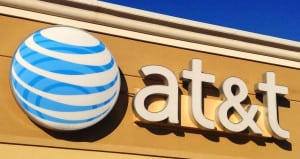AT&T Touts Early Promise of DirecTV Purchase
[Via Satellite 10-26-2015] AT&T is already seeing the benefits of its merger with U.S. satellite pay-TV giant DirecTV. The telco completed the acquisition in July, after agreeing to certain four-year conditions from the Federal Communications Commission (FCC). On the company’s 2015 third quarter earnings call — the first following the acquisition — Senior Vice President (SVP) and Chief Financial Officer (CFO) John Stephens said AT&T is beginning to benefit from synergies with DirecTV.
“It’s early in our integration of DirecTV — we don’t even have a full quarter of results — yet our integration efforts are on or ahead of target, and early results indicate this deal will prove to be everything we thought it would be and more,” he said Oct. 22.
Consolidated revenues for AT&T grew to $39.1 billion, up close to 19 percent Year-over-Year (YoY), thanks largely to DirecTV. That number does not include the first 24 days of DirecTV revenue post-purchase because of Generally Accepted Accounting Principles (GAAP).
“We are selling DirecTV in virtually all our 22,000 company-owned stores,” said Stephens. “The next step is launching certified dealers and online, as well as ramping up sales in our call centers. It’s starting to make an impact; DirecTV net adds picked up shortly after the deal closed and were solid throughout the rest of the quarter. That drove 26,000 satellite net-adds post deal-close. We now have more than 25 million video subscribers in the U.S.”
The DirecTV acquisition increases the scale of AT&T, and is expected to result in $2.5 billion in cost synergies. Stephens said the merger was particularly beneficial for AT&T’s video business, where its U-Verse Internet Protocol Television (IPTV) offering has struggled. AT&T also reached a deal with Viacom announced Oct. 5 that benefits U-Verse and DirecTV services. U-Verse subscriptions continued to decline throughout the quarter as AT&T shifts focus to DirecTV’s satellite services.
“Our service technicians have been installing broadband for us for U-Verse, but they hadn’t been installing DirecTV. So we have been putting them through a training program, and we are expecting the first set of technicians to roll out, after fully trained on installing satellite in the home, in probably November,” said Stephens.
AT&T is pursuing other cost saving methods as well. Stephens particularly highlighted investments in Software Defined Networks (SDNs) and cloud infrastructure, stating that by 2020 the company plans to virtualize and control more than 75 percent of its network using these means. Another cost-saver project, High Automation Low Overhead (HALO), is expected to streamline installation costs. Operating expenses for AT&T were $33.2 billion versus $27.4 billion compared to the third quarter of 2014, and operating income was $5.9 billion versus $5.6 billion. AT&T’s operating income margin was 15.2 percent, down from 17 percent in the year-ago quarter.
Stephens mentioned other drivers of growth for the company included post paid tablets and computing devices, its Cricket pre-paid mobile offering, and the connected car. AT&T added a record 1.6 million new connecter devices, including 1 million connected cars.
In Latin America, Stephens said DirecTV continues to show solid growth on a local level, but that foreign exchange rates and economic challenges still enervate what would be strong results. This continues unabated by AT&T’s decision to adopt Venezuela’s Simadi exchange rate. Stephens said the company will continue to work through these headwinds and work on operational efficiencies in Latin America. He stressed that the DirecTV merger shows great promise, and expects it will continue to be a boon for the company overall.
“It’s important that we do this right coming out of the gate,” he said. “We have been holding back much of our cross-selling promotions as we train service reps and technicians for premium, single-service experience so we will see the benefits of those strategies impact future quarters.”
